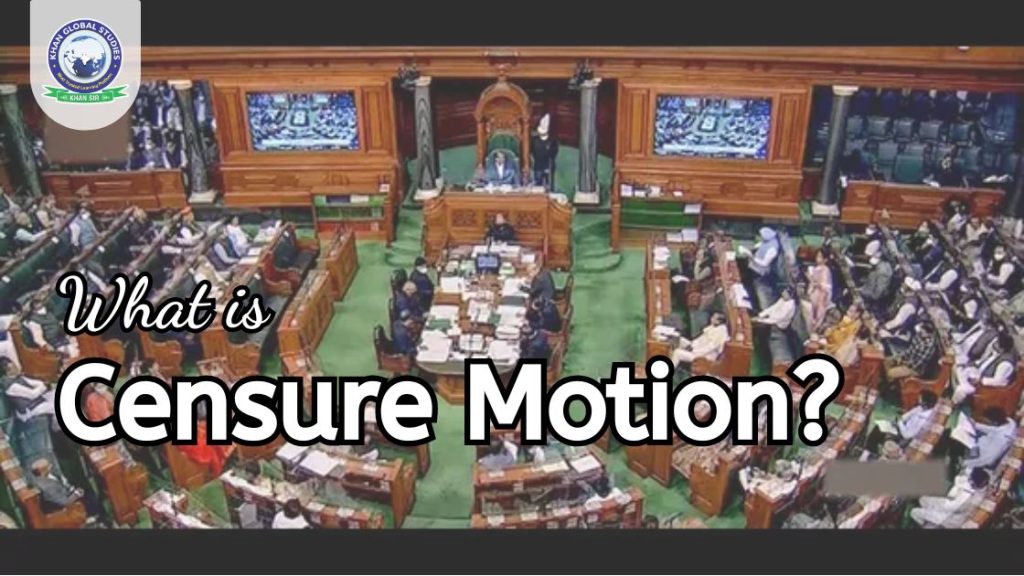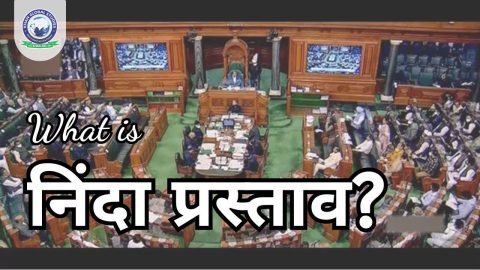A censure motion is a formal document used to criticize the actions or policies of an individual, group, or organization. Its purpose is to express disapproval, condemnation, or protest. Censure motions are used in various contexts, including politics, education, religion, and business.
Objectives of Censure Motion
Censure motions can have several objectives, including:
- Raising Awareness: Drawing attention to an issue or problem.
- Applying Pressure: Encouraging an individual or organization to change their actions or policies.
- Moral Condemnation: Declaring the actions of an individual or organization as wrong or inappropriate.
- Showing Solidarity: Expressing support for a cause or ideology.
- Punishment: Penalizing an individual or organization for their wrongdoings.
History of Censure Motion
Censure motions have been used for centuries. In ancient Greece and Rome, they were employed to publicly criticize citizens. During the Middle Ages, the Church used censure motions to condemn heretics. In the modern era, censure motions have been utilized to express political dissent, condemn human rights abuses, and protest environmental damage.
Process of Censure Motion
The process for censure motions typically depends on the context in which they are used.
Generally, it involves the following steps:
- Drafting the Motion: Preparing a document outlining the individual or organization being censured, details of their actions or policies, and the reasons for the censure.
- Submitting the Motion: Presenting the motion to a relevant body, such as a legislature, educational institution, or religious organization.
- Debate and Vote: Discussing the motion and voting on whether to accept it.
- Implementing the Decision: If the motion is passed, actions may be taken against the censured individual or organization, such as sanctions, expulsion, or punishment.
Limitations of Censure Motion
Censure motions have certain limitations:
- Limited effectiveness: They may not always be successful in changing an individual or organization’s behaviour and can be ignored.
- Potential for Misuse: They can be misused as political weapons or to discredit individuals or groups.
- Polarization: They can polarize people and exacerbate social divisions.
When is a Censure Motion Introduced?
A censure motion is a formal instrument used to express strong disapproval of the actions or policies of an individual, group, or organization. It is typically employed in legislative settings to censure the government or an individual minister. Censure motions can also be passed to criticize or condemn a particular action. They serve as a means for the House to express its disapproval, anger, or surprise at a minister’s or ministers’ actions or failures.
Where are Censure Motions Introduced?
Understanding the concept of censure motions also entails knowing where they are introduced. In India, censure motions are tabled in the lower house or the state legislative assembly. The Rajya Sabha is the upper house of Parliament, and its members are primarily elected or nominated indirectly by the President. The Lok Sabha, on the other hand, is the lower house and is also known as the People’s House as the general public directly elects its members through voting. Censure motions inherently involve criticizing the government.
How Many Times Have Censure Motions Been Introduced?
There is no limit to the number of censure motions that can be introduced in a session. In the Lok Sabha, it is necessary to state the reason for accepting it. The exact number of times censure motions have been introduced is not documented. In 2019, 50 Lok Sabha MPs mentioned a censure motion over the insult to the Father of the Nation Mahatma Gandhi.
What is the Time Allotted for Discussion on a Censure Motion?
Time is allotted for every procedure in the House. The time for discussion on a censure motion is fixed, as follows:
- Any Member of Parliament (MP) can introduce a censure motion.
- It is a protest against government policies.
- The motion must mention the allegations against the government.
- It is usually introduced as an early-day motion.
- There is no fixed day for debate on it, and an MP is allowed to express his views on a particular issue.
- If MPs get time to debate and vote on the censure motion, it will only require a simple majority vote to be passed.
- Censure motions have no binding effect.
Additional Points
- A censure motion is distinct from a no-confidence motion. A no-confidence motion directly challenges the government’s ability to govern and requires a special majority to be passed.
- Censure motions can be an effective tool for the opposition to hold the government accountable and express its disapproval of its actions.
- However, censure motions are not legally binding and do not have any direct consequences for the government.
- The effectiveness of a censure motion depends on the political context and the level of support it garners from other MPs.
Conclusion
A censure motion is a powerful tool for criticizing individuals, groups, or organizations. However, it is crucial to be aware of its limitations and ensure its use is responsible and ethical.





